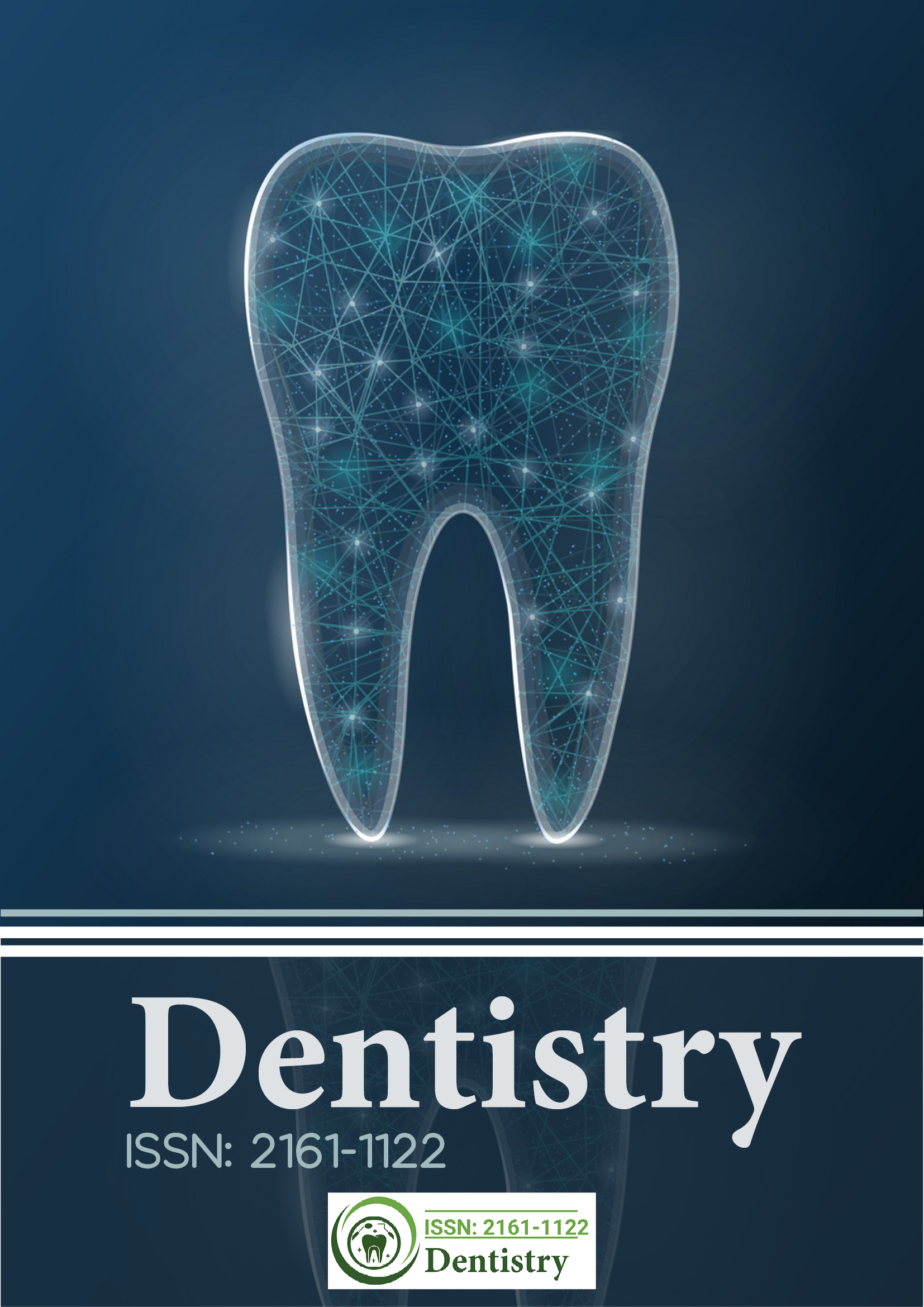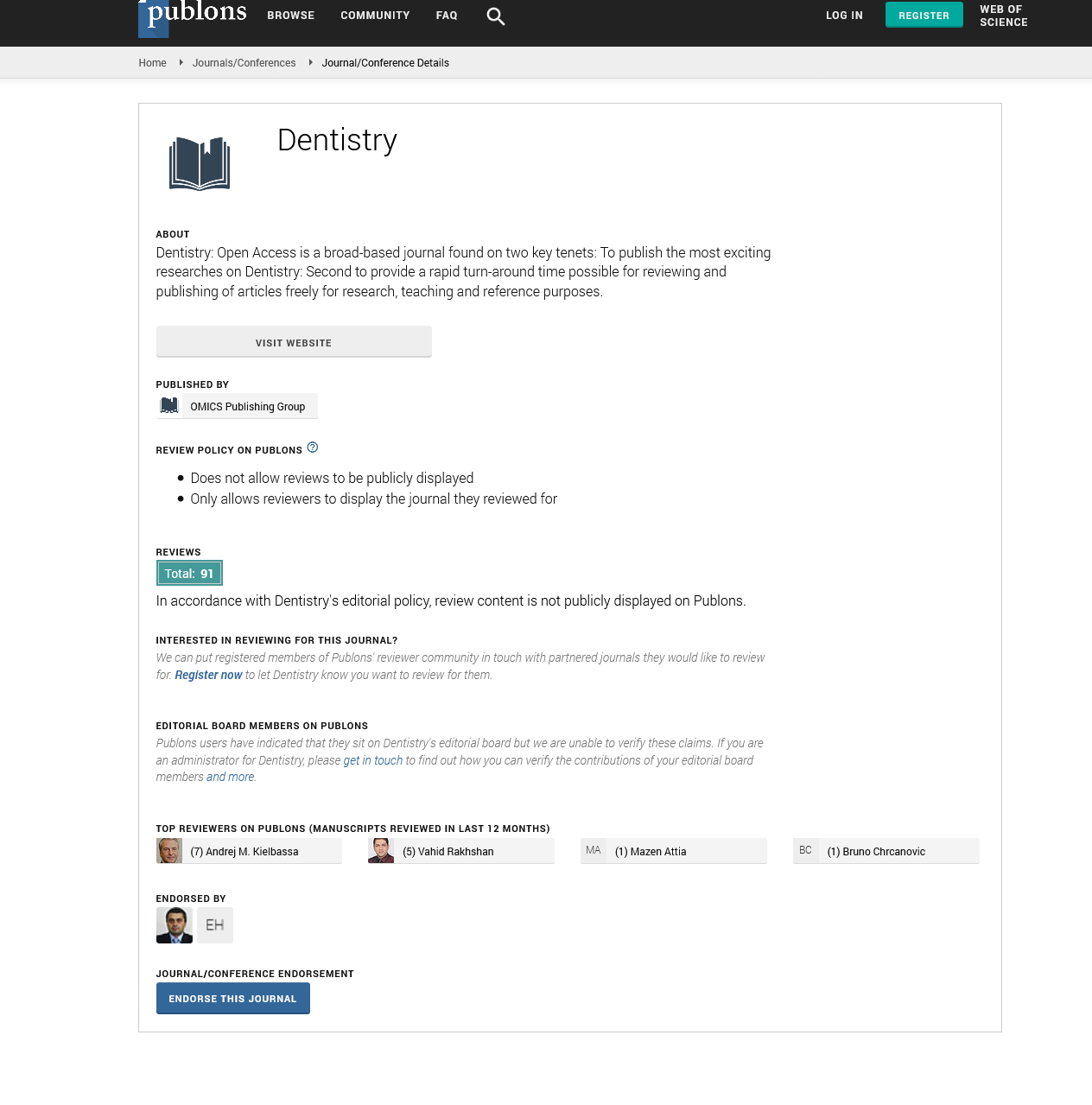Citations : 2249
Dentistry received 2249 citations as per Google Scholar report
Indexed In
- Genamics JournalSeek
- JournalTOCs
- CiteFactor
- Ulrich's Periodicals Directory
- RefSeek
- Hamdard University
- EBSCO A-Z
- Directory of Abstract Indexing for Journals
- OCLC- WorldCat
- Publons
- Geneva Foundation for Medical Education and Research
- Euro Pub
- Google Scholar
Useful Links
Share This Page
Journal Flyer

Open Access Journals
- Agri and Aquaculture
- Biochemistry
- Bioinformatics & Systems Biology
- Business & Management
- Chemistry
- Clinical Sciences
- Engineering
- Food & Nutrition
- General Science
- Genetics & Molecular Biology
- Immunology & Microbiology
- Medical Sciences
- Neuroscience & Psychology
- Nursing & Health Care
- Pharmaceutical Sciences
Correlation between the atlas morphology and the maxillo-mandibular divergence pattern
23rd International Conference on Dentistry and Dental Materials
July 19-20, 2018 | Rome, Italy
Hafiz Taha Mahmood and Mubassar Fida
Aga Khan University Hospital, Pakistan
Scientific Tracks Abstracts: Dentistry
Abstract:
Introduction: Early identification of the maxillo-mandibular divergence pattern of patients allows orthodontists to attain maximum improvement in skeletal relationships through growth modification and avoid orthognathic surgery. Aim: Therefore, the aim of this study is to evaluate the correlation between atlas morphology and maxillo-mandibular divergence. Materials & Methods: A cross-sectional study was conducted on the pretreatment lateral cephalograms of 208 subjects aged 18 to 25 years. The atlas parameters were categorized into atlas dorsum, anteroposterior and ventrum and measured on View Pro-X software. Various maxillary (FPPP, SNPP and FHPP angles) and mandibular (SNGoGn, saddle, articulare, gonial, sum of posterior and Y-axis angles) parameters were used to evaluate the divergence pattern of the individual. The Mann-Whitney U test was used to compare atlas and maxillo-mandibular parameters between genders. Spearman correlation was used to correlate atlas and maxillo-mandibular parameters across genders. A p-value‚?§0.05 was considered as statistically significant. Results: Statistically significant differences were found between various atlas and maxillo-mandibular parameters between genders. With atlas dorsum, the saddle angle (r=-0.3) in males whereas gonial (r=-0.2), Y-axis (r=0.1) and SNPP (r=-0.2) angles in females showed significant weak correlation. With atlas anteroposterior, saddle (r=-0.2), articulare, (r=0.2), SNPP (r=-0.2) and FHPP (r=-0.3) angles in males showed significant weak correlation. However, only the SNPP angle (r=-0.2) in females showed a significant weak correlation with atlas ventrum. Conclusions: A weak correlation was found between atlas parameters and various maxillo-mandibular angular parameters in both genders. Therefore, atlas morphology cannot be regarded as a good predictor of future maxillo-mandibular divergence pattern.
Biography :
Hafiz Taha Mahmood has completed his BDS in 2012 from Dow University of Health Sciences, Karachi, Pakistan. He has published 5 research papers in local and international journals in the field of Dentistry. Currently, he is working as Resident in the Department of Orthodontics in Aga Khan University Hospital, Karachi, Pakistan.
E-mail: taha.mahmood@aku.edu

